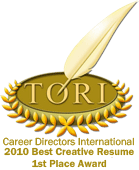 Resume styles change just like clothing, furniture, and car styles do. Keeping up with the trends is important so that your resume looks fresh and current. You wouldn’t dream of typing your resume on an ancient manual typewriter. Don’t use dated formats and lists for the same reason.
Resume styles change just like clothing, furniture, and car styles do. Keeping up with the trends is important so that your resume looks fresh and current. You wouldn’t dream of typing your resume on an ancient manual typewriter. Don’t use dated formats and lists for the same reason.
Not long ago, job seekers started to hear about keywords. “Make sure you have enough keywords in your resume. Make sure you have the right keywords in your resume.” That is when we started to see lists or tables of words and phrases appear in resumes.
This was also when Applicant Tracking Systems (ATS) were initially being used to screen applicant resumes before human saw them. The ATS searched for keywords that HR fed into it, and when it matched a certain number of the right criteria, the resume was plucked out of the pile for further review.
At that time, the keywords and key phrases were usually listed under a heading such as Skills, Expertise, or Competencies, looking something like this one for a Clinical Social Worker:
· Clinical Assessment · Couples Therapy · Interpersonal Violence
· Interviews / Referrals · Social Work Theory · PTSD
· Behavioral Health · Prevention Programs · Sexual Assault
· Victim Advocacy · Program Development · Family Therapy
· Individual Therapy · Community Awareness · Suicide Prevention
It was a good plan and helped lots of people reach consideration who might not otherwise have had a chance.
Now, the ATS has become smarter. No longer is it enough to add keywords and phrases in a list because with the advent of online application, companies receive thousands of resumes for a single open position. Applicants must differentiate themselves by customizing their resumes with very specific facts.
It isn’t enough anymore to describe job duties. Hiring managers want to know how well an applicant performed.
One way to do that is to expand on the skills list by adding accomplishments and quantifiable data to the list. For example, the clinical social worker above might add these facts to the list:
- Clinical Assessment: Perform 10 to 12 assessments of in-patient and out-patient clients per week.
- Interviews / Referrals: Conduct client interviews and refer clients to community resources.
- Behavioral Health: Recognized for developing and implementing out-patient behavior modification contracts.
- Victim Advocacy: Accompanied high-profile crime survivors to legal appointments and court appearances over two years.
- Individual Therapy: Provide therapy through variety of approaches to as many as 20 clients per week.
This strategy allows for more keywords to be used (for example: in-patient, out-patient, and community resources) and for the job seeker to provide a more complete picture of their performance.
Tips
- Choose as bullet list item headings terms that appear in the job description for the desired position.
- Keep your list relatively short, five or six items, by choosing the most important that appear on the job description.
- Use specific instances from your work, especially if you have received recognition or achieved a high level of performance in a certain item.
- Quantify your work by asking yourself, “How many?” “How often?” “For how long?”
- Use a heading for the category such as “Value-Added Skills” or “Value to Organization.”
- Place the list below the summary on the first page of your resume.
Customizing your skills list will set you apart from other applicants and provide hiring managers with immediate and concrete examples of your skills and accomplishments.
If your resume has become hopelessly out of date, contact me to find out if we would be a good fit to work together to bring it some new life.








